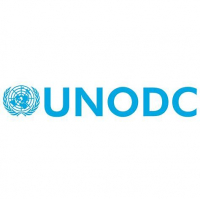The UNODC global database on trafficking in persons is a global data resource. Covering a range of trafficking indicators, the database houses 248,000 victims officially detected worldwide since 2003. Beyond victims, the database includes more than 66,000 people convicted of and 108,000 people prosecuted for the offense of trafficking in persons.
The global database has shed light on issues documented in the UNODC biannual Global Report on Trafficking in Persons:
- Most detected victims of trafficking in persons are not trafficked across international borders. While most countries in the world are affected by cross-border trafficking, more than half (58 per cent) of the victims detected in 2016 were trafficked within their country of citizenship.
- At least 570 cross-border human trafficking flows between 2012-2014 were identified using data from reported victims of 160 different citizenships detected or repatriated from 140 countries worldwide. Since these flows are based on only victims detected, this represents the tip of the iceberg of the countless trafficking flows that are criss-crossing the world.
- Most people convicted for trafficking in persons are citizens of the country where the trafficking crime was prosecuted. In 2016, only 30 per cent of the traffickers globally convicted were foreigners in the country where they were convicted.
- The profile of the detected victims of trafficking changes drastically according to regional and socio-economic dynamics. While Europe and the Western Hemisphere are characterized by more frequent detection of trafficking for sexual exploitation, trafficking for forced labour is more frequently detected in Africa and the Middle East. In much of Asia, there are similar numbers of victims trafficked for forced labour and for sexual exploitation. The age profiles of the victims seem to change according to countries’ wealth; low-income countries detect child trafficking more frequently, while adult trafficking is more frequently detected in medium- and high-income countries.
Global data on smuggling of migrants is less systematized, but the statistics compiled by UNODC in its 2018 Global Study on Smuggling of Migrants can still reveal important patterns:
- There is virtually no country in the world which is not linked to smuggling of migrants in some way. Migrants can be smuggled by a multitude of methods: via land, via sea and via air. Some countries are the origin of migrants that are smuggled, while others are destinations or transit areas. There are a myriad of routes used to smuggle migrants that change rather quickly. The Global Study identified more than 30 main smuggling routes.
- Migrant smuggling is a highly profitable market for the smugglers. At least 2.5 million migrants were smuggled in 2016, generating a minimum annual income for smugglers of about US$5.5 to 7 billion.
- Smugglers may charge different smuggling fees for the same routes for many factors, including the risks of being caught or the risks of human suffering for migrants using the routes. Smugglers charge more for safer smuggling transportation, as well as if they perceived the migrants to be wealthy.
Though we have gained greater insight and knowledge into trafficking in persons and smuggling of migrants in the past decade, there is still more to learn.
Most of what we know about trafficking in persons is based on victims who come to the attention of national authorities or civil society organizations. Very little can be revealed about the victims who remain hidden in exploitative situations and never come to the attention of the authorities. These victims are likely to be a much larger number of those who appear in the statistics of detected victims and may display different patterns and vulnerabilities that remain uncovered – and are therefore harder to prevent.
Data on smuggling of migrants is even less complete than on trafficking in persons. Data collection systems on migration are typically not designed to record the possible involvement of smugglers. Migrant smuggling operations are only recorded on ad hoc basis when they may pose security challenges to host countries but are rarely part of routine statistics. Unlike trafficking in persons, where there is now an established global data collection system, migrant smuggling still lacks a regular global statistical system where it would be possible to regularly “connect the dots” of national statistics to understand the transnational nature of the problem.
More lives could be saved with more targeted policies if more and better statistics could be collected and disseminated. The forthcoming International Forum on Migration Statistics in Cairo is an opportunity to discuss how to improve data on trafficking in persons and smuggling of migrants and to support countries to apply innovative statistical solutions.
One of these solutions is the Multiple Systems Estimation (MSE) which can reveal the ‘hidden figure’ of the trafficking victims who are not detected and do not appear in the current statistics. Results from UNODC’s work with four European countries that carried out national studies using this methodology have helped national authorities to recognize underestimates of national victims . This information has helped develop programmes to prevent potential victimization. The MSE methodology is a cost-effective solution to enhance knowledge on trafficking in persons, which can populate Sustainable Development Goals indicator 16.2.2 on the number of victims of trafficking per 100,000 population, by sex, age and form of exploitation. Initiatives such as the MSE help to address some of the challenges of collecting data on migrant smuggling and trafficking in persons, but further action is needed from the statistical community to spread more broadly this methodology and complement it with broader survey-based methodology.
This blog post is part of the International Forum on Migration Statistics (IFMS) series on the Global Migration Data Portal. The second IFMS, organized by IOM, OECD and UN DESA will take place in Cairo on 19-21 January 2020. Find more information about the IFMS here.



